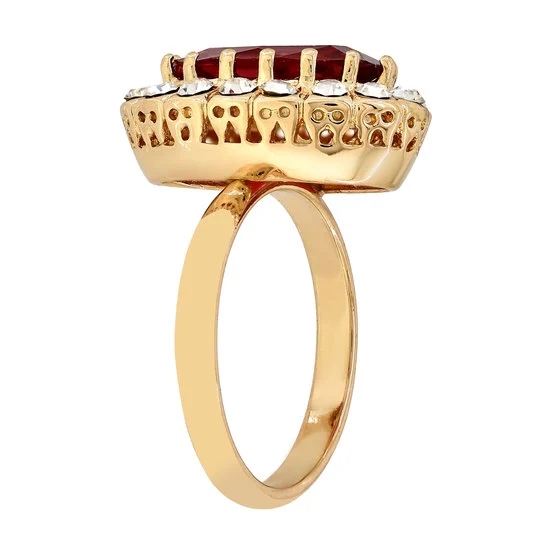The history of African jewelry is a testament to the rich cultural heritage and artistic traditions of the continent. For centuries, African communities have used jewelry not only as adornment but also to convey status, spirituality, and cultural identity. From ancient origins to its influence on global fashion, the story of African jewelry is one of creativity, diversity, and symbolism.
Tracing back to ancient times, the beginnings of African jewelry-making can be found in archaeological discoveries that date back thousands of years. The techniques and materials used in crafting these early pieces underscore the deep connection between African societies and their natural environment. Each piece carries with it a wealth of tradition and meaning that reflects the unique customs and beliefs of different African communities.
The significance of African jewelry goes beyond mere aesthetic appeal. Symbolism plays a crucial role in the designs, with each motif and pattern carrying specific meanings that tell stories about people’s lives, beliefs, and experiences. As we journey through the history of African jewelry, we unravel the layers of symbolism behind each intricate design, gaining insight into the cultural nuances embedded in these timeless adornments.
Ancient Origins
Early Beginnings
The history of African jewelry dates back thousands of years, with evidence of early adornment and ornamentation found in archaeological excavations across the continent. From the intricate beadwork of the Maasai tribe in East Africa to the metalworking traditions of the Yoruba people in West Africa, the craft of jewelry-making has been an integral part of African culture since ancient times.
The earliest forms of African jewelry were crafted from organic materials such as bone, shells, and animal teeth, reflecting a deep connection to nature and the surrounding environment.
Traditional Techniques
Ancient African civilizations developed sophisticated techniques for creating jewelry, including metal casting, filigree work, and intricate weaving. These methods were passed down through generations, with each community incorporating its unique aesthetic and symbolism into their designs. For example, the Ethiopian tradition of hand-casting intricate silver crosses is a testament to the skilled craftsmanship and spiritual significance attributed to jewelry in many African societies.
Social and Spiritual Significance
In addition to being objects of beauty, African jewelry holds great cultural and symbolic importance. Different forms of adornment were used to signify social status, tribal affiliations, and important life events such as marriage or coming-of-age ceremonies. The motifs and patterns found in African jewelry often carry deeper meanings related to fertility, prosperity, protection, or spiritual beliefs. Understanding the historical context behind these symbols adds another layer of appreciation for the artistry and heritage encapsulated in African jewelry.
As we delve into the ancient origins of African jewelry-making, it becomes evident that these timeless traditions continue to inspire contemporary artisans around the world. The next section will focus on unraveling the meanings behind African jewelry designs and exploring their symbolism and significance within different cultures across the continent.
Symbolism and Significance
African jewelry has a rich and diverse history dating back centuries, with each piece carrying its own symbolism and significance. The history of African jewelry can be traced back to ancient times, where it played a crucial role in the social, cultural, and spiritual aspects of African societies. From amulets and talismans to elaborate headdresses and body adornments, these pieces not only served as decorative accessories but also held deep meaning within the communities they were created in.
One of the most fascinating aspects of African jewelry is the intricate symbolism behind its designs. Each shape, pattern, and material used in the creation of these pieces holds specific significance within different African cultures. For example, certain symbols may represent fertility, protection from evil spirits, or social status. This symbolism is often passed down through generations, preserving age-old traditions and beliefs.
Furthermore, the significance of African jewelry extends beyond mere aesthetics. These pieces are deeply intertwined with various rituals, ceremonies, and rites of passage within African communities. Whether it’s a coming-of-age ceremony or a wedding celebration, the wearing of specific jewelry holds immense cultural importance. As such, African jewelry serves as a tangible link to ancestral customs and beliefs that have been upheld for centuries.
| Symbol | Meaning |
|---|---|
| Ankh | Symbolizes life and immortality |
| Adinkra | Represents different virtues such as wisdom or strength |
| Ndebele Neck Rings | Serve as a symbol of beauty and wealth within Ndebele culture |
These examples illustrate how African jewelry is not just about adornment but also about communicating deep-rooted cultural meanings and values.
Traditional Materials
African jewelry has a rich history that dates back to ancient times. One of the most fascinating aspects of African jewelry is the use of traditional materials in crafting these adornments. From the sands of the Sahara to the lush forests of Central Africa, artisans have utilized natural resources to create stunning pieces that are not only visually striking but also deeply meaningful.
In various regions across Africa, different natural materials have been employed in jewelry-making, reflecting the diverse landscapes and resources found on the continent. For example, in East Africa, Maasai tribes have long used colorful beads made from shells, seeds, and bone to create intricate necklaces and bracelets.
In West Africa, gold has been a prized material for creating regal crowns and intricate filigree work. Additionally, brass and copper have been popular choices for crafting ornate jewelry among cultures such as the Yoruba and Benin people.
The use of natural materials in African jewelry goes beyond mere aesthetics; it also holds symbolic significance. For many African societies, certain materials are believed to possess spiritual properties or represent specific cultural values. These materials often connect wearers to their heritage and traditions, making African jewelry not just an accessory, but a powerful symbol of identity and community.
| Materials | Regions |
|---|---|
| Shells, seeds, bone | East Africa (Maasai tribes) |
| Gold | West Africa (Yoruba, Benin people) |
| Brass, copper | Various regions across Africa |
Evolution of Techniques
The evolution of jewelry-making techniques in Africa is a testament to the ingenuity and creativity of its artisans. Over the centuries, African jewelry has transitioned from traditional methods to incorporate modern influences, creating a diverse and fascinating array of designs.
Traditional Techniques
Traditional African jewelry-making techniques were deeply rooted in local customs and traditions. Artisans would handcraft intricate pieces using ancient methods such as lost-wax casting, filigree work, and beadwork. These techniques varied from region to region, with each community developing its own distinctive style.
Adoption of Modern Technology
With the advent of colonialism and global trade, African artisans began to adopt modern technology and tools in their jewelry-making process. This led to the introduction of metalworking machinery, allowing for mass production and increased efficiency in crafting jewelry. While some purists may argue that this shift has diluted the authenticity of traditional African jewelry, others view it as a necessary adaptation to meet the demands of a changing market.
Fusion of Traditional and Modern Elements
In recent years, there has been a growing trend towards combining traditional techniques with contemporary design aesthetics. Many African jewelers are embracing innovation while still honoring their cultural heritage by incorporating modern materials and styles into their creations. This fusion has resulted in a dynamic range of jewelry that appeals to both local and international audiences.
The history of African jewelry-making techniques is a testament to the resilience and adaptability of its craftsmen. By melding tradition with innovation, African artisans continue to produce timeless pieces that celebrate their rich cultural heritage while also captivating the global fashion scene.
Regional Diversity
African jewelry is a reflection of the continent’s rich and diverse cultural heritage. From ancient times to the present day, African jewelry has played a significant role in both personal adornment and cultural expression. The history of African jewelry is an intricate tapestry woven from the traditions, beliefs, and artistic innovations of various African societies.
African jewelry varies greatly across different regions of the continent, with each area boasting its unique styles, materials, and techniques. Some notable examples include:
- Tuareg Jewelry: The Tuareg people of North Africa are known for their exquisite silver jewelry, often featuring intricate designs and engravings that hold symbolic meanings within their culture.
- Maasai Jewelry: The Maasai tribe of East Africa is renowned for their colorful beadwork, which adorns both men and women as a symbol of beauty, status, and cultural identity.
- Goldsmithing in West Africa: West Africa has a long history of goldsmithing, with skilled artisans creating elaborate gold jewelry using traditional techniques passed down through generations.
These are just a few examples of the diverse range of African jewelry styles found across the continent. Each piece holds deep cultural significance within its respective community and serves as a visual representation of rich traditions and beliefs.
As global awareness and appreciation for African culture continue to grow, so too does the influence of African jewelry on global fashion trends. Designers around the world are drawing inspiration from the bold colors, intricate patterns, and timeless elegance of African jewelry, further solidifying its place in the global fashion landscape. Whether it’s the vibrant beadwork of East Africa or the fine metalwork of West Africa, the influence of African jewelry continues to resonate across continents.
The history of African jewelry is not just about adornment; it’s about preserving heritage, celebrating diversity, and honoring centuries-old traditions that continue to inspire awe and admiration worldwide.
Influence of African Jewelry on Global Fashion and Trends
African jewelry has a rich history that dates back centuries, with each piece carrying deep cultural and symbolic significance. The influence of African jewelry on global fashion and trends cannot be overstated, as its unique designs and traditional techniques continue to inspire contemporary jewelry makers and fashion designers around the world.
The impact of African jewelry on global fashion and trends can be seen in the following ways:
- Unique Aesthetic: African jewelry’s distinct aesthetic, characterized by bold colors, intricate beadwork, and use of natural materials such as bone, ivory, and metal, has captivated the international fashion scene. Its vibrant and eye-catching designs have been incorporated into modern accessories such as statement necklaces, earrings, bracelets, and even headpieces.
- Cultural Fusion: The incorporation of African jewelry elements into mainstream fashion has led to a beautiful blend of cultures. Fashion designers often draw inspiration from traditional African motifs, symbols, and patterns to create contemporary pieces that pay homage to the history of African jewelry while appealing to a global audience.
- Redefining Luxury: African jewelry has challenged traditional notions of luxury in the fashion industry. With an emphasis on craftsmanship, authenticity, and cultural storytelling, African-inspired jewelry offers a different perspective on what constitutes high-end accessories. This shift has prompted consumers to appreciate the artistry behind handmade pieces with historical roots.
As we continue to celebrate the timeless beauty and cultural importance of African jewelry, it is clear that its influence on global fashion and trends will only continue to grow. From runway shows to everyday street style, the legacy of African jewelry continues to inspire creativity and serve as a vibrant representation of diverse heritage. Whether it’s through traditional crafting methods or contemporary reinterpretations, African jewelry leaves an indelible mark on the world of fashion.
Contemporary African Jewelry
In recent years, there has been a remarkable resurgence in the appreciation and production of traditional African jewelry. This revival is not only a celebration of the artistic and cultural heritage of the continent but also a reflection of an increasing global interest in diverse and unique forms of adornment. Contemporary African jewelry designers are revisiting traditional techniques and designs, breathing new life into age-old practices.
One significant aspect of this revival is the fusion of traditional craftsmanship with modern design sensibilities. While artisans continue to work with time-honored materials such as beads, cowrie shells, and brass, they are also incorporating contemporary elements to create pieces that resonate with both local and international audiences. The result is a reimagining of African jewelry that pays homage to its roots while appealing to modern tastes.
Furthermore, the revival of traditional African jewelry has provided economic opportunities for communities across the continent. Artisans and craftspeople who specialize in jewelry-making are finding new platforms to showcase their work, both locally and globally.
In doing so, they are able to preserve their cultural traditions while also contributing to their livelihoods and those of their families. This not only ensures the survival of these invaluable craft skills but also fosters a sense of pride in the cultural heritage attached to these art forms.
The contemporary resurgence of traditional African jewelry is not just a trend; it represents a deeper recognition of the historical significance and enduring beauty of these adornments. As global fashion trends continue to embrace diversity and authenticity, African jewelry plays an integral role in shaping contemporary aesthetics while honoring its rich legacy.
With designers and consumers alike celebrating the intricate artistry and symbolism embodied in these pieces, it is evident that the history of African jewelry continues to captivate hearts around the world.
Conclusion
In conclusion, the history of African jewelry is a testament to the rich heritage and cultural significance of the continent. From ancient origins to contemporary designs, African jewelry has played a vital role in expressing the traditions, beliefs, and identity of its people. The craftsmanship and artistry involved in creating these pieces reflect the deep sense of pride and admiration for their cultural heritage.
The symbolism and significance behind African jewelry designs are profound, with each piece telling a unique story about its wearer. Whether it’s the use of natural materials like beads, shells, or metals, or the intricate techniques passed down through generations, African jewelry carries with it a sense of tradition and history that transcends time.
Furthermore, the influence of African jewelry on global fashion and trends cannot be understated. Its vibrant colors, bold patterns, and intricate designs have found their way into international runways and mainstream fashion.
Today, there is a revival of traditional techniques and designs in contemporary African jewelry, demonstrating a renewed appreciation for this timeless art form. As we continue to celebrate the beauty and cultural importance of African jewelry, it is essential to recognize its enduring legacy that continues to inspire and captivate people around the world.
Frequently Asked Questions
Where Did African Jewelry Originate?
African jewelry has a rich and diverse origin, with each region having its own unique traditions and materials. From the intricate beadwork of the Maasai tribe in East Africa to the goldsmithing skills of the Akan people in West Africa, African jewelry showcases a wide range of techniques and styles.
What Does Jewelry Symbolize in Africa?
In Africa, jewelry symbolizes various aspects of life, including social status, spirituality, and cultural identity. For example, certain pieces may indicate a person’s marital status or tribal affiliation. Jewelry is also used in traditional ceremonies and rituals to communicate symbolic meanings.
What Kind of Jewelry Do Africans Wear?
Africans wear a wide variety of jewelry, often crafted from locally sourced materials such as gold, copper, beads, shells, and animal bones. These materials are then skillfully transformed into necklaces, bracelets, earrings, and rings that hold personal or communal significance. The type of jewelry worn varies by region and cultural practices within Africa.

Welcome to my jewelry blog! My name is Sarah and I am the owner of this blog.
I love making jewelry and sharing my creations with others.
So whether you’re someone who loves wearing jewelry yourself or simply enjoys learning about it, be sure to check out my blog for insightful posts on everything related to this exciting topic!





